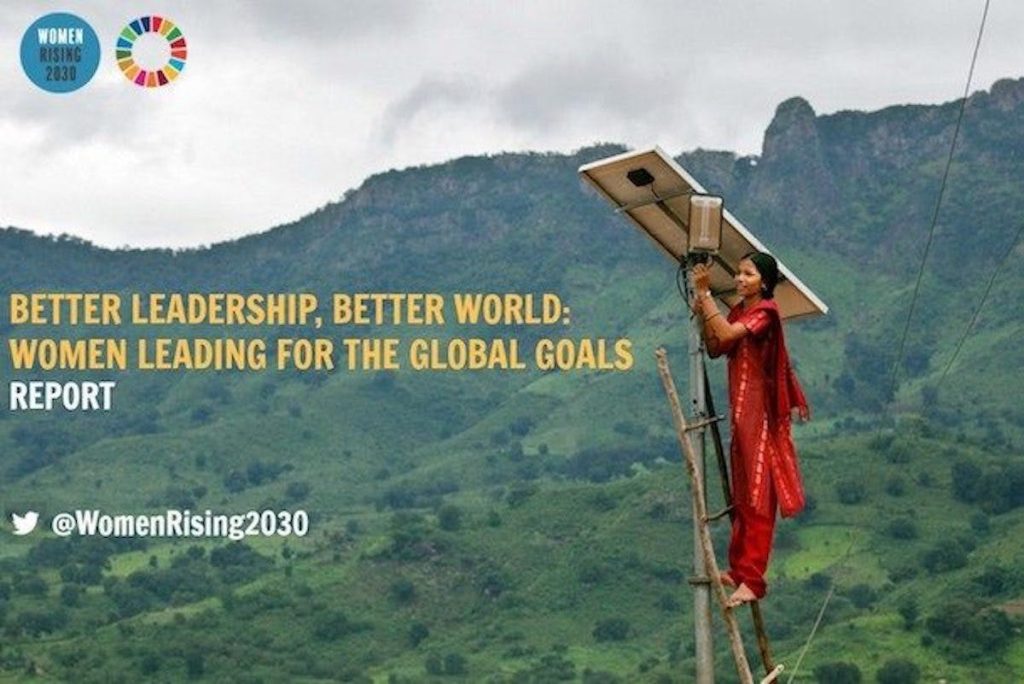
How can we drive meaningful change in the private sector to encourage sustainability and support communities while growing economies? Promote women’s leadership.
Last week, in celebration of International Women’s Day, the Business & Sustainable Development Commission released a report, Better Leadership, Better World: Women Leading for the Goals, which finds that business teams that are gender-balanced with women in leadership roles have competencies in areas that are important to business growth and sustainable development: long-term thinking, innovation, collaboration, transparency, environmental management, and social inclusiveness.
The report makes the case that greater diversity and female leadership deepens these competencies, which then accelerates sustainable and longer-term business opportunities in line with the SDGs.
It is a continued call to action for more organizations and actors to incorporate the Sustainable Development Goals (SDGs) into their core operations, but it also pushes us all to think about the powerful role that women leaders and diversity can play as accelerators toward the goals and in unlocking the $12 trillion in new market opportunities that exist.
An essential point in the report is that women are more than beneficiaries of the Sustainable Development Goals, but leaders in driving SDG action and implementation.
This report aims to be inspirational, inclusive, and to provide guidance to organizations wanting to do more around sustainability and diversity, making the case to both women and men in the workplace who are committed to the SDGs or want to learn more.
This effort was personally motivated by people on the commission who wished to elevate the important role that diversity plays – and specifically gender diversity in the workplace – in helping companies and organizations achieve the SDGs.
It offers personal stories from 25 senior women leaders, including Mars, Unilever, Ceres, and the UN Global Compact, and offers personal reflections and recommendations on how to increase greater equality and leadership in the workplace – from the board room to those just starting their careers.
Why is this discussion important now? Three reasons:
First is the data and the current context: A World Economic Forum recent report says it will take 217 years to achieve gender equality in the workplace if all things remain equal. Women occupy just 15% of board seats globally, with 5% of CEOs in the US. being women. Gender equality in the workplace is top of mind for many and is part of our zeitgeist today. It is not going away, as my 9-year-old daughter likes to point out to me with optimism and impatience as she already excels me in math.
Second, the report shows that this status quo just doesn’t make economic sense. A McKinsey study demonstrates that gender equality can add trillions to global annual GDP over the next several years. Greater diversity does have an impact on long-term and sustainable strategies and decision-making, which can help us all accelerate and make strides toward the SDGs.
And third, things are shifting. The report highlights recent positive trends and encourages others to build off of them. BlackRock, for examples, announced a few weeks ago that it will now ask companies to justify their lack of gender diversity on their boards and explain how it aligns with long-term strategies, and to report back on this gender imbalance. For them, they are looking at the economic bottom line and are connecting sustainability, profit, and gender equality much more directly. I’d watch this space.
Changing business-as-usual about leadership will require a change in mindsets, and this report can contribute by helping leaders understand the business argument for gender-balance and diversity.
Business leaders can begin by sharing the report to spark open and honest conversations that challenge our perceptions about what we value in our leaders. The gender equality revolution has already begun. It’s time for all of us – business, business school students, shareholders, and my young daughter – to buckle up and help put our foot on the gas.

